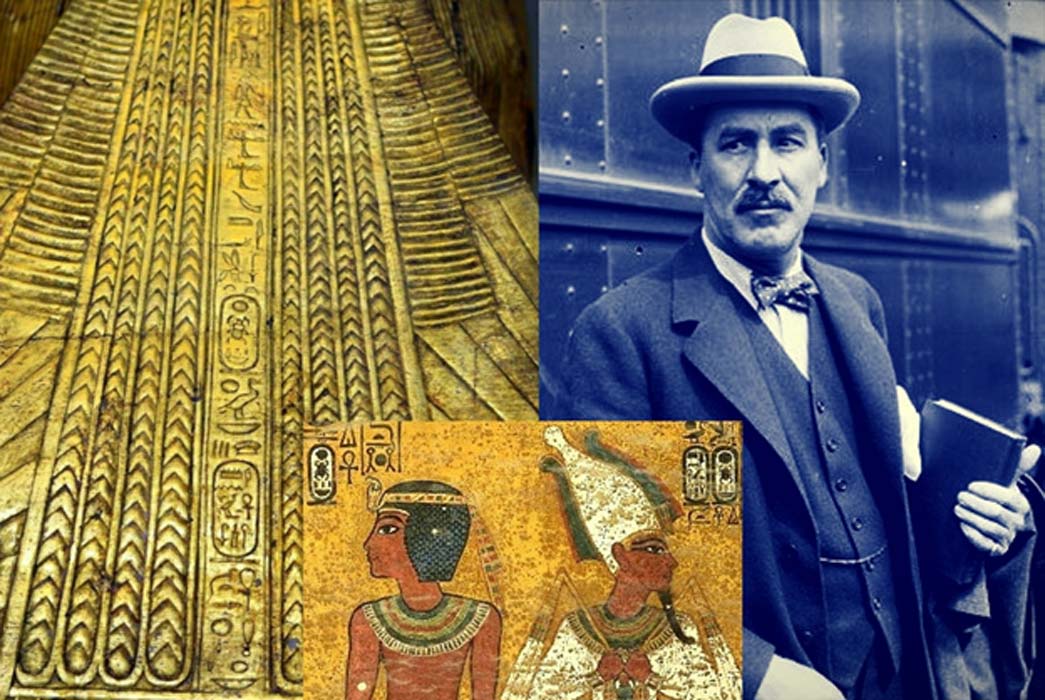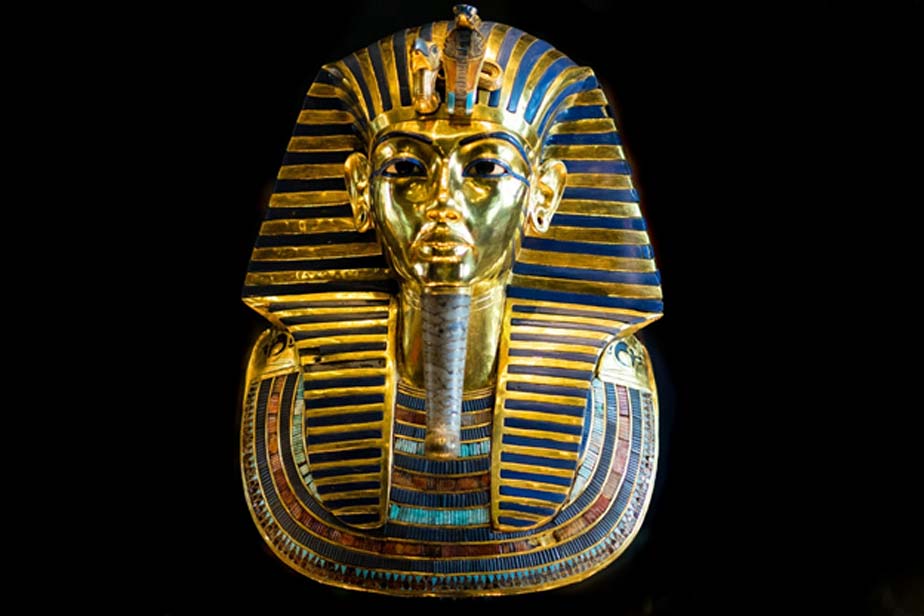
Slew of Surreal Experiences tied to KV62. Carter and Tut: Masks, Mosquitoes, and Mania!
There were several exciting, strange and puzzling happenings in the run-up to the discovery of Tutankhamun’s tomb and later. While Howard Carter wasn’t sure of the words he had used to describe his reaction on gaining the first glimpse of the treasures; a mosquito brought death on its wings to the financier, Lord Carnarvon. Today, we are surprised to hear the ancient pronunciation of the boy-king’s name; and to learn that there really was no romantic involvement between key players in the KV62 saga.

The dazzling golden mask that was found on the mummy of the boy-king Tutankhamun. The headpiece is embellished with inlays of both glassy material and a range of semi-precious stones. These include obsidian and white quartz (for the eyes), lapis lazuli (for the eye surrounds and eyebrows), and turquoise, amazonite, carnelian, and other stones (as inlays of the broad collar). Egyptian Museum, Cairo. (Photo: Mark Fischer/CC BY-SA 2.0)
Carter Version 3.0
There were many events that impacted the world in 1922. Mahatma Gandhi was jailed for questioning British rule in India; Benito Mussolini was elected the first fascist dictator in Europe; and the USSR became the world’s first communist state. Amidst all these occurrences, the discovery of Tutankhamun’s tomb in November of that year sent the press into overdrive. It had been a fairly gloomy post-war period for Egypt, and indeed much of the world. This made news of the find more than welcome. But fascinating things happened even before the first flashbulb went off in the Valley of the Kings.

(Counter clockwise) Lady and Lord Carnarvon; Howard Carter; an early photo of Tutankhamun’s mask without the beard; Carter and Carnarvon at the opening of the sealed doorway to the burial chamber; Carter chips away the hardened black unguents from the innermost coffin of solid gold; the 16 steps that led to the Antechamber; and a signboard outside KV62 (Public Domain: Harry Burton. Griffith Institute, Oxford and Chris Brown).
After years of painstaking work, British archeologist Howard Carter had at last discovered the Holy Grail of Egyptology: “… a magnificent tomb with seals intact”. His patron, the wealthy and flamboyant George Edward Stanhope Molyneux Herbert – better known to the world as the fifth Earl of Carnarvon, or Lord Carnarvon – set off for Egypt on receiving a telegram that bore this incredible news. Accompanying him on this journey was his daughter, Lady Evelyn Herbert. Two-and-a-half weeks later, the duo stood face-to-face with an exuberant Carter.

The location of KV62 (Bottom right of image) that lay undisturbed beneath debris from the tomb of Ramesses VI (Nineteenth Dynasty) over which ancient workmen’s huts were built. This image shows the site of Tutankhamun's tomb soon after its discovery in 1922. (Public Domain: Harry Burton. Griffith Institute, Oxford)
Laboring at a fever pitch, workmen cleared the rubble from the descending entrance passage in Tutankhamun’s tomb — which was initially designated Tomb 433 and later, the now familiar, KV62. Soon, Carter, his heart thumping with excitement, stood in awe before the second sealed doorway that separated him from the boy king’s treasures.




